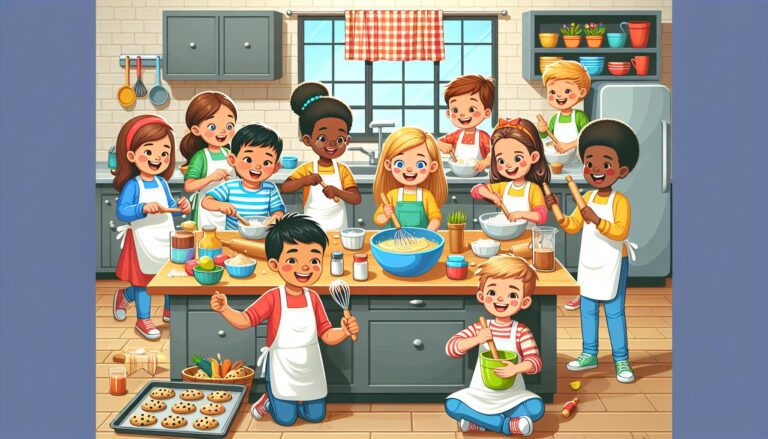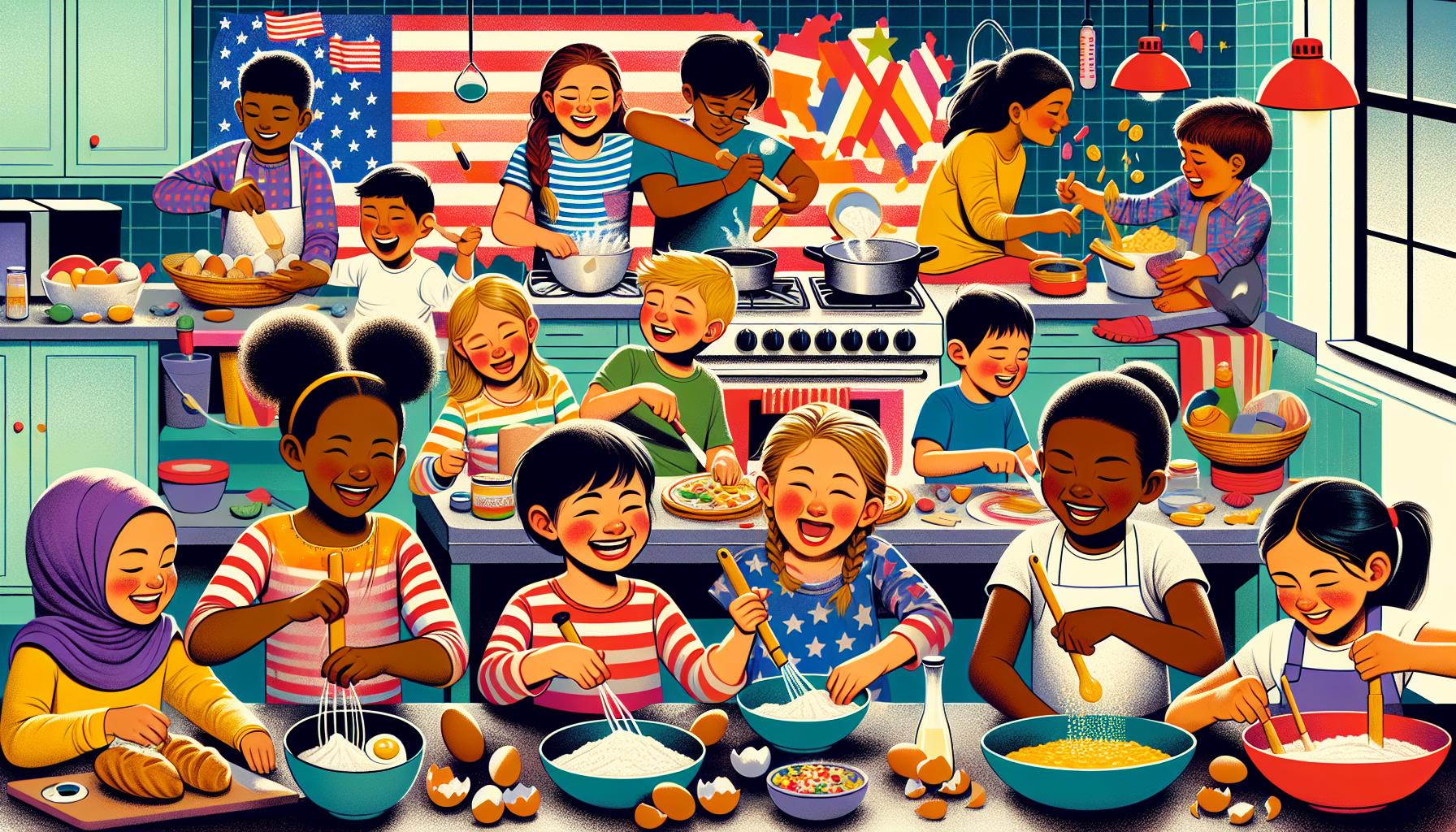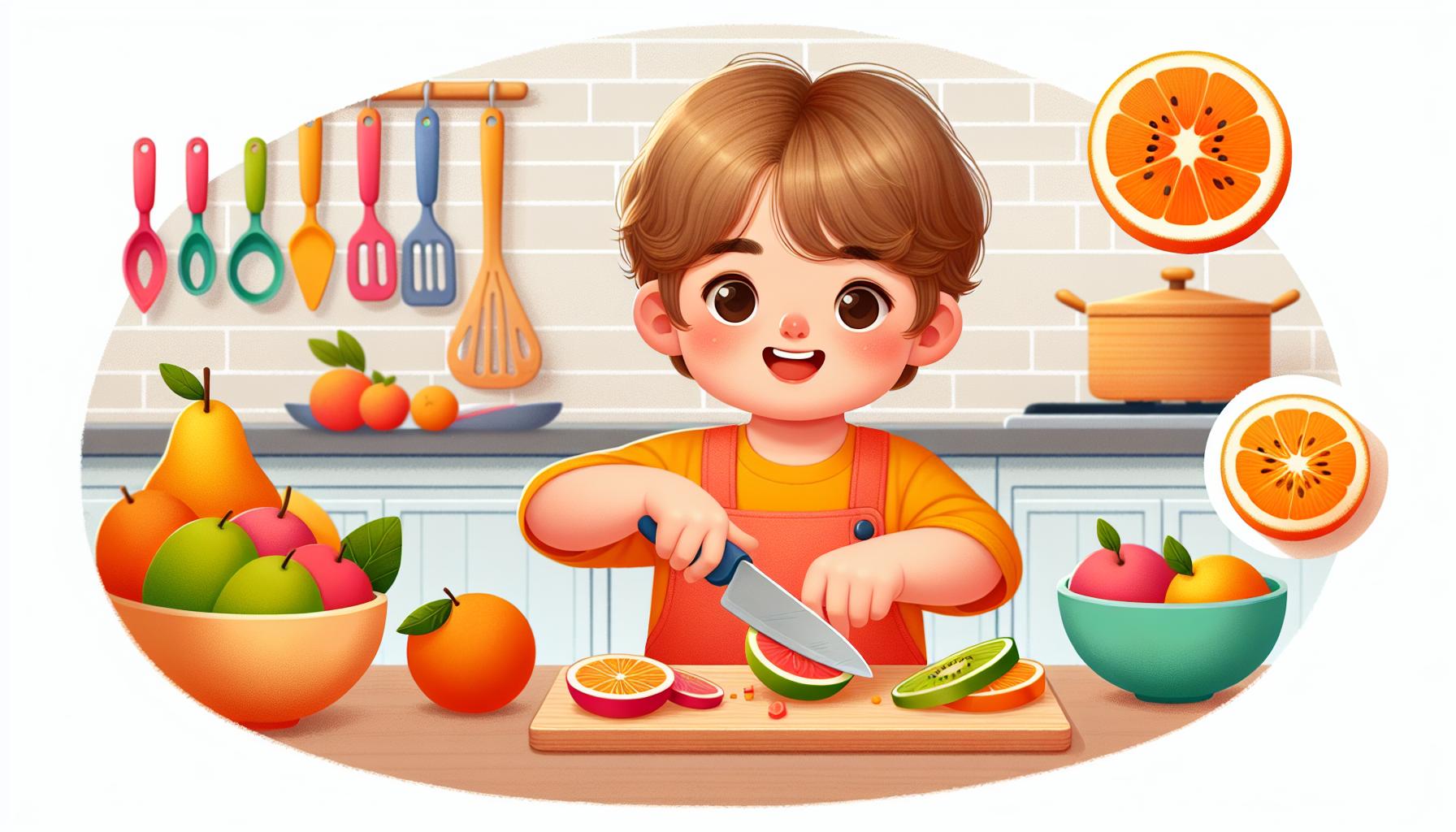
Looking to spark creativity and learning in your kitchen? We know that getting kids excited about cooking can transform regular meals into fun adventures. From basic baking skills to following recipes, culinary activities offer children valuable life lessons while creating delicious treats.
We’ve seen how hands-on cooking experiences help kids develop essential skills beyond the kitchen. When children measure ingredients, mix batters, and decorate their creations, they’re actually practicing math, following instructions, and exploring kitchen science. What’s more exciting than watching your little one’s face light up as they pull their first batch of cookies from the oven?
Whether you’re starting with classic cookies or exploring seasonal treats, these activities cater to all skill levels. Kids who participate in cooking activities gain confidence, learn patience, and develop a deeper appreciation for food preparation – all while having a blast in the kitchen.
Key Takeaways
- Cooking activities help kids develop essential life skills like math, science, and following instructions while making learning fun in the kitchen.
- Age-appropriate tasks are crucial – toddlers can mix and wash ingredients, school-age children can measure and mix, while teens can handle advanced cooking techniques.
- Kitchen safety is fundamental – using proper tools, practicing food hygiene, and following temperature guidelines ensures a safe cooking environment for children.
- Hands-on projects like no-bake recipes, simple baking, and creative food art make cooking engaging while teaching valuable kitchen skills.
- Involving kids in cooking helps build healthy eating habits by teaching nutrition basics, smart food choices, and encouraging exploration of fresh ingredients.
Benefits of Teaching Kids to Cook
Teaching kids to cook creates lasting advantages that extend beyond the kitchen. The skills gained from cooking activities shape children’s development in multiple areas.
Building Life Skills and Independence
Cooking activities empower kids with practical abilities for self-sufficiency. Children learn essential kitchen safety rules like handling hot surfaces cautiously using oven mitts. They develop organizational skills through measuring ingredients sorting utensils. Time management improves as they coordinate multiple cooking steps such as preheating the oven while mixing ingredients. These experiences boost their confidence to:
- Plan balanced meals by selecting nutritious ingredients
- Practice food hygiene by washing hands produce properly
- Follow recipes accurately step by step
- Clean up workspaces effectively after cooking
- Store ingredients properly in appropriate containers
Developing Math and Science Knowledge
Kitchen activities naturally incorporate mathematical scientific concepts into hands-on learning. Measuring ingredients teaches fractions volume conversion as kids use cups teaspoons. Scientific principles come alive through observable reactions like:
| Kitchen Science Example | Concept Learned |
|---|---|
| Bread rising | Yeast fermentation |
| Ice cream making | State changes |
| Cookie spreading | Heat effects |
| Oil water separation | Density properties |
Kids practice:
- Multiplying recipe quantities
- Converting metric imperial measurements
- Timing cooking intervals
- Observing chemical reactions
- Testing temperature changes
- Exploring ingredient properties
These practical applications reinforce classroom learning while making abstract concepts tangible through direct experience.
Age-Appropriate Cooking Activities

Selecting the right cooking activities based on age helps children develop kitchen skills safely. Each age group benefits from specific tasks that match their developmental abilities while building confidence in the kitchen.
Simple Tasks for Toddlers
Toddlers excel at hands-on tasks that develop motor skills in the kitchen. They can:
- Mix dry ingredients with a wooden spoon
- Tear lettuce leaves for salads
- Wash fruits and vegetables in cold water
- Place prepared ingredients into bowls
- Sprinkle cheese on pizzas or casseroles
- Help measure ingredients with scoops
- Knead soft dough for bread or cookies
Projects for School-Age Children
School-age children demonstrate readiness for more complex cooking tasks. Here’s what they can do:
- Read recipes and gather ingredients
- Crack eggs into bowls
- Measure wet and dry ingredients accurately
- Use a butter knife to spread toppings
- Mix batter with hand mixers
- Form cookies or meatballs
- Arrange ingredients on sheet pans
- Create simple sandwiches and wraps
- Help load and unload the dishwasher
Teen-Friendly Recipe Ideas
Teens can handle advanced cooking techniques with proper supervision. These recipes build their culinary skills:
- Homemade pizza from scratch
- Breakfast burritos with fresh ingredients
- Smoothie bowls with creative toppings
- Baked pasta dishes
- Stir-fry vegetables with rice
- Cookie and brownie recipes
- Simple soups and stews
- Fresh salads with homemade dressing
- Basic grilled items like quesadillas
- Plan balanced meals
- Practice knife skills safely
- Learn food safety guidelines
- Master timing multiple dishes
- Experiment with seasonings
- Create original recipe variations
Essential Kitchen Safety Rules for Children

Teaching kitchen safety forms the foundation for confident young cooks. A safe cooking environment protects children while building their culinary skills.
Safe Equipment and Tools
Children need properly sized tools that match their age and skill level. Here’s what to consider:
- Use plastic knives or butter knives for ages 4-7
- Select child-sized oven mitts with secure grips
- Keep sharp objects stored separately in locked drawers
- Place non-slip mats under mixing bowls and cutting boards
- Use step stools with railings for better counter access
- Choose heat-resistant bowls and utensils
- Store heavy equipment in lower cabinets
Key safety practices include:
- Clean tools immediately after use
- Keep electrical appliances away from water
- Turn pot handles toward the back of the stove
- Supervise use of kitchen gadgets at all times
- Unplug appliances when not in use
Basic Food Handling Guidelines
Safe food handling prevents illness and creates healthy cooking habits. Here are essential practices:
Personal hygiene:
- Wash hands for 20 seconds with soap and warm water
- Tie back long hair and wear clean aprons
- Remove jewelry before cooking
- Use separate hand towels for drying
Food safety rules:
- Keep raw meats separate from other ingredients
- Wash fruits and vegetables thoroughly
- Use different cutting boards for produce and proteins
- Check food temperatures with a thermometer
- Store perishables at correct temperatures
- Label leftover containers with dates
| Food Type | Safe Internal Temperature |
|---|---|
| Ground meat | 160°F (71°C) |
| Poultry | 165°F (74°C) |
| Fish | 145°F (63°C) |
| Eggs | 160°F (71°C) |
Fun Cooking Projects to Try Together
Engaging children in hands-on cooking projects creates excitement while teaching valuable kitchen skills. These activities transform ordinary ingredients into delicious treats through creative exploration.
No-Bake Recipes
No-bake recipes offer quick gratification for young chefs eager to create tasty treats. Kids can mix ingredients like graham crackers, chocolate chips, nuts, dried fruits or cereal to make energy balls, granola bars or chocolate-covered treats. These recipes build confidence with simple measuring, mixing and assembly tasks while avoiding hot ovens or stovetops.
Simple Baking Adventures
Baking introduces kids to kitchen science through pre-measured ingredients and illustrated instructions. Beginning bakers thrive with classic recipes for cookies, cupcakes or seasonal treats. The step-by-step process teaches essential skills like following directions, measuring ingredients and observing how ingredients transform during baking. Kids experience pride and accomplishment watching their creations emerge from the oven.
Creative Food Art
Food art transforms ordinary ingredients into edible masterpieces that inspire imagination. Kids can:
- Arrange fruit slices into rainbow patterns
- Design silly faces on sandwiches using vegetables
- Create animal shapes with cookie cutters
- Build landscapes using different colored foods
- Make edible paint from natural food dyes
This hands-on approach encourages creativity while teaching food preparation basics. Children learn knife skills by cutting soft fruits, fine motor control through decorating and color recognition by selecting ingredients. The resulting edible art pieces make nutritious snacks more appealing and fun.
| Skill | Application |
|---|---|
| Math | Measuring quantities, counting ingredients |
| Science | Observing chemical reactions, temperature changes |
| Art | Food presentation, color combinations |
| Reading | Following recipe instructions |
| Motor Skills | Mixing, spreading, assembling |
Building Healthy Eating Habits Through Cooking
Cooking activities create opportunities for children to develop positive relationships with nutritious foods. Teaching kids about balanced meals through hands-on cooking experiences helps them make informed food choices.
Understanding Nutrition Basics
Kids learn essential nutrition concepts by exploring different food groups during meal preparation. A color-coded system helps children identify fruits (red apples, yellow bananas), vegetables (green broccoli, orange carrots), proteins (lean meats, beans), grains (brown rice, whole wheat pasta) and dairy products. Interactive activities like creating rainbow salads or building balanced plates reinforce these nutritional lessons.
| Food Group | Examples | Benefits |
|---|---|---|
| Fruits | Apples, Bananas, Berries | Vitamins, Fiber |
| Vegetables | Carrots, Broccoli, Spinach | Minerals, Antioxidants |
| Proteins | Chicken, Fish, Beans | Muscle Growth |
| Grains | Rice, Pasta, Bread | Energy, Fiber |
| Dairy | Milk, Yogurt, Cheese | Calcium, Protein |
Making Smart Food Choices
Children develop decision-making skills by participating in meal planning and grocery shopping. Simple activities include:
- Reading food labels to identify sugar content
- Comparing fresh produce with processed alternatives
- Creating shopping lists based on balanced meal requirements
- Picking seasonal fruits and vegetables
- Understanding portion sizes using measuring tools
Hands-on cooking projects teach kids to substitute healthier ingredients:
- Using applesauce instead of oil in baking
- Adding pureed vegetables to pasta sauces
- Choosing whole grain bread over white bread
- Making homemade snacks instead of buying packaged options
These practical experiences connect children with their food choices while building lasting healthy habits through active participation in the kitchen.
Conclusion
Getting kids involved in the kitchen opens up a world of opportunities for learning and growth. We’ve seen how these culinary adventures teach valuable life skills while creating lasting memories and healthy habits.
From simple mixing tasks to creative food art projects the kitchen becomes a classroom where math science and creativity come together naturally. Through hands-on cooking experiences kids develop confidence independence and a better understanding of nutrition.
We believe that every moment spent cooking with children is an investment in their future. It’s more than just making meals – it’s about nurturing skills that will serve them throughout their lives. Let’s make the kitchen a place where learning and fun come together deliciously.
Frequently Asked Questions
At what age can children start helping in the kitchen?
Children can start participating in kitchen activities as early as toddlerhood (around 2-3 years old). Start with simple tasks like washing fruits, mixing dry ingredients, or kneading dough. As they grow older, they can take on more complex tasks under supervision. The key is to match activities with their developmental abilities and ensure proper safety measures.
What basic safety rules should children follow in the kitchen?
Essential kitchen safety rules include washing hands before cooking, wearing an apron, tying back long hair, using appropriate tools for their age, keeping electrical appliances away from water, and always having adult supervision. Children should also learn to clean as they cook and handle sharp objects only when they’re ready and supervised.
How does cooking help children learn math and science?
Cooking naturally incorporates math through measuring ingredients, understanding fractions, and converting measurements. Science concepts come alive through observing chemical reactions (like baking soda in cookies), physical changes (melting chocolate), and temperature effects. These hands-on experiences make abstract classroom concepts more tangible and memorable.
What are some easy cooking projects for beginners?
No-bake recipes are perfect for beginners, such as trail mix, fruit salads, or graham cracker treats. Simple sandwiches with creative designs, smoothies, and basic cookie recipes are also great starting points. These projects build confidence while teaching fundamental cooking skills without requiring complex techniques or equipment.
How can cooking activities promote healthy eating habits?
Involving children in cooking helps them develop a positive relationship with nutritious foods. When kids participate in meal preparation, they’re more likely to try new foods and understand the importance of balanced meals. Activities like creating colorful salads and learning about food groups make nutrition education fun and memorable.
What skills do children develop through cooking?
Cooking develops multiple skills including fine motor skills (through mixing and pouring), reading comprehension (following recipes), math (measuring), science (observing changes), creativity (food presentation), patience, and organizational abilities. It also builds self-confidence and independence while teaching practical life skills.
How can parents ensure kitchen activities remain safe?
Parents should provide age-appropriate tools, maintain constant supervision, teach proper hand washing, establish clear safety rules, and ensure the workspace is properly set up. Using plastic knives for younger children, keeping hot surfaces out of reach, and teaching food safety basics are essential precautions.
What are signs that a child is ready for more advanced cooking tasks?
Children are ready for advanced tasks when they consistently follow basic safety rules, show patience and focus during simple cooking activities, understand and follow multi-step instructions, and demonstrate responsible behavior with basic kitchen tools. Their maturity level and previous kitchen experience should guide progression to more complex tasks.

